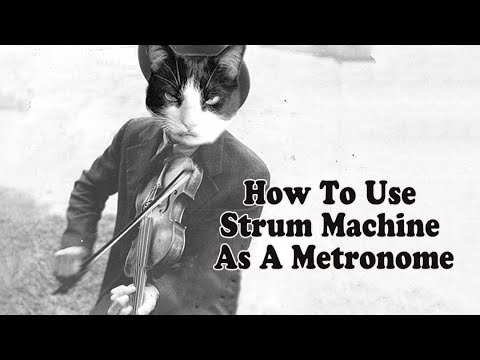A lot of my students want to improve their timing and play faster. But when I suggest using a metronome their eyes glaze over. It just doesn’t seem like fun.
I get it. I believe that learning and practice can be fun for a student. And that they can make real progress as they have fun. So how can we learn to enjoy timing practice? Strum Machine solves the problem of the un-fun metronome practice situation.
HOW DO YOU USE STRUM MACHINE AS A METRONOME?
You can use SM to practice scales, exercises and small parts of tunes using the looping feature.
For example, select a D Major chord, then loop on that to practice D Major scale. Practice different variations. Speed up or slow down as needed.
You can also set it to speed up automatically after a certain number of repetitions (which you can also set). I like to start slow and then automatically speed up until I go a little past my edge. And then I work at the edge.
For example, I’ve been practicing certain slur patterns across strings like slur 2-separate 2 .
As you’ll see in the video, my edge is around 160 bpm. Then I can practice a little slower, then speed up a little past my edge.
You can use the same strategy to practice any scale or a single phrase from a tune. Just loop on the relevant part of the song.
I set up SM songs which cover the common fiddle scales. I set up three songs of this in standard time (4/4), waltz time (3/4) and jig time (6/8). It’s not that innovative of an idea, but I hope that it gets you to think in a new way about how you practice.
Note that the basic meter for Strum Machine is cut time: 2/2. In other words, if a song is set to 60 bpm, that means there are 60 half notes per minute. I tend to think in terms of quarter notes, so I mentally double the tempo when I use SM as a metronome. So 60 bpm would be 120 bpm if you count it as quarter notes.
I was initially confused by this aspect of strum machine and so I asked Luke (the creator of SM) to explain. It didn’t affect me so much in my own practice but more in teaching this to others.
YOU CAN PRACTICE ANYTHING
This lesson is part of a mini-course I put together called How To Play In Time. It’s a collection of lessons, articles and exercises to help you play better in time, how to play faster and how to figure out tricky rhythms.
You can improve any aspect of your playing. You just have to find a way to practice it.
View the lesson page for FREE on the FiddleHed site here:
https://fiddlehed.co/HowToUseStrumMachineAsAMetronome
